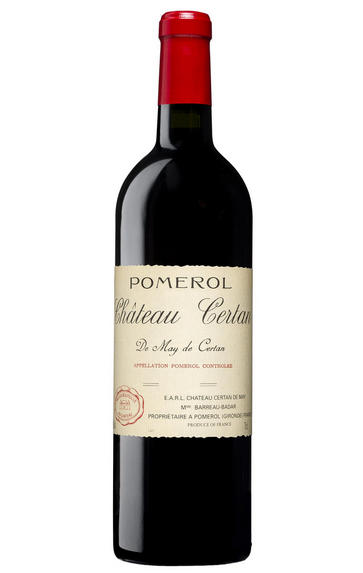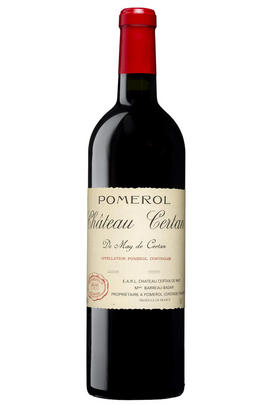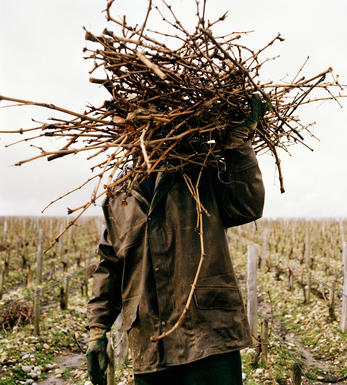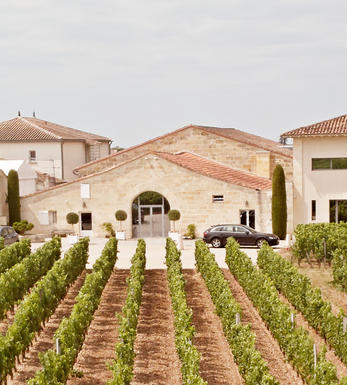
2010 Château Certan de May, Pomerol, Bordeaux

Critics reviews
Robert M. Parker, Jr. - 28/02/2013
About this WINE

Chateau Certan de May
Château Certan de May is a first class Pomerol estate that takes its name from a Scottish family who established themselves in Pomerol in the 17th century. It is now owned by Odette Barreau-Badar and is located in the east of the appellation, on the Pomerol plateau between Vieux-Chateaux Certan and Pétrus, and directly opposite Le Pin.
Certan de May's vines (Merlot 70%, Cabernet Franc 25%, Cabernet Sauvignon 5%) have an average age of 45 years and lie on sandy-gravel topsoils, underpinned by a hard-pan clay subsoil. Fermentation lasts 4-6 weeks in stainless steel, followed by up to a month's maceration before 16 months' oak ageing, 40% new.

Pomerol
Pomerol is the smallest of Bordeaux's major appellations, with about 150 producers and approximately 740 hectares of vineyards. It is home to many bijou domaines, many of which produce little more than 1,000 cases per annum.
Both the topography and architecture of the region is unremarkable, but the style of the wines is most individual. The finest vineyards are planted on a seam of rich clay which extends across the gently-elevated plateau of Pomerol, which runs from the north-eastern boundary of St Emilion. On the sides of the plateau, the soil becomes sandier and the wines lighter.
There is one satellite region to the immediate north, Lalande-de-Pomerol whose wines are stylistically very similar, if sometimes lacking the finesse of its neighbour. There has never been a classification of Pomerol wines.
Recommended Châteaux : Ch. Pétrus, Vieux Ch. Certan, Le Pin, Ch. L’Eglise-Clinet, Ch. La Conseillante, Ch. L’Evangile, Ch. Lafleur, Trotanoy, Ch. Nenin, Ch. Beauregard, Ch. Feytit-Clinet, Le Gay.

Merlot
The most widely planted grape in Bordeaux and a grape that has been on a relentless expansion drive throughout the world in the last decade. Merlot is adaptable to most soils and is relatively simple to cultivate. It is a vigorous naturally high yielding grape that requires savage pruning - over-cropped Merlot-based wines are dilute and bland. It is also vital to pick at optimum ripeness as Merlot can quickly lose its varietal characteristics if harvested overripe.
In St.Emilion and Pomerol it withstands the moist clay rich soils far better than Cabernet grapes, and at it best produces opulently rich, plummy clarets with succulent fruitcake-like nuances. Le Pin, Pétrus and Clinet are examples of hedonistically rich Merlot wines at their very best. It also plays a key supporting role in filling out the middle palate of the Cabernet-dominated wines of the Médoc and Graves.
Merlot is now grown in virtually all wine growing countries and is particularly successful in California, Chile and Northern Italy.


Buying options
Add to wishlist
Description
Chocolaty, cedary and Christmas fruitcake notes along with some oak, damp earth and forest floor are present in this full-bodied, masculine style of Pomerol, which has a dense ruby/purple color and is a blend of Cabernet Franc and Merlot. The wine has a nice chewiness to it and is powerful and muscular, but not quite as silky or complex as some of the other top wines of this appellation. Forget it for 5-7 years and drink it over the following 25.
Robert M. Parker, Jr. - 28/02/2013
wine at a glance
Delivery and quality guarantee